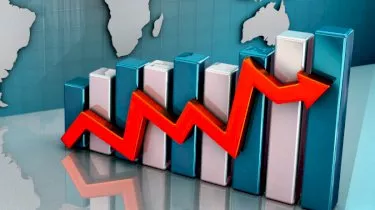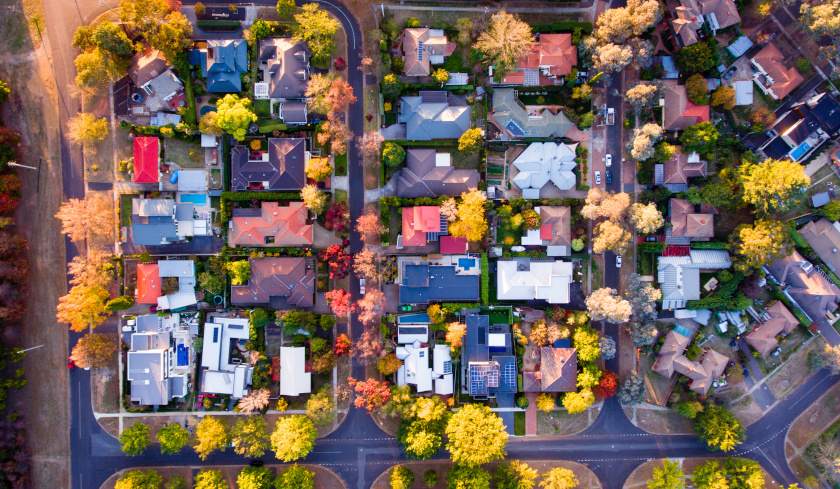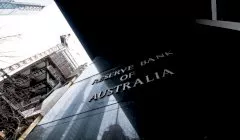Invest
Aussie property gains beginning to ease up
The housing market is beginning to feel the effects of higher mortgage rates and more stringent credit policy, with capital gains beginning to slow up despite a continuation of the growth in capital city dwelling prices, a report has found.
Aussie property gains beginning to ease up
The housing market is beginning to feel the effects of higher mortgage rates and more stringent credit policy, with capital gains beginning to slow up despite a continuation of the growth in capital city dwelling prices, a report has found.

The Hedonic Home Value Index for July 2017, an index put together by property research firm CoreLogic, showed a 1.5 per cent rise in dwelling values over the month, with Melbourne strongly contributing towards the figure.
Across the country for the month, Melbourne saw a 3.1 per cent rise in dwelling values, followed by Canberra at 2.4 per cent, then Sydney at 1.4 per cent, Adelaide at 1.1 per cent and Hobart at 0.9 per cent.
Meanwhile, Perth, Darwin and Brisbane recorded losses in dwelling values, with 1.3 per cent, 1.2 per cent and 0.6 per cent respectively.
Tim Lawless, CoreLogic’s head of research, said the results show the market’s diversity of conditions.

“The recent bounce in capital gains may be partially due to a recovery from the seasonal slump in values recorded in April and May,” Mr Lawless said.
However, other factors, such as stamp duty concessions for first home buyers in NSW and Victoria, may also be having a positive impact on market demand.”
“It’s still too early to measure the effect of first home buyer incentives, which went live on 1 July. However, historically, the first time buyer segment has been very responsive to stimulus measures.”
Even with high capital gains for dwelling values, the rate of gains has been slowing over the quarter, with gains of 3.6 recorded in February of this year, compared to 2.2 per cent at the end of July.
Sydney and Melbourne show how much capital gains are slowing, with Sydney going from 5 per cent earlier this year to 2.2 per cent at the end of the quarter, and Melbourne going from 5.5 per cent to 4.2 per cent.
“Melbourne appears to be benefiting from consistently high population growth which is creating strong demand for housing, as well as consistently high jobs growth and more affordable housing options relative to Sydney,” Mr Lawless said.
Mr Lawless predicted the pace of capital gains to continue to slow down throughout the rest of the year, especially in Sydney, and to a lesser extent in Melbourne, coming down from high levels of value growth over the last five years.
Weekly rental rates over the month have declined and are at record lows for the combined capital cities, mostly due to falls in Melbourne and Sydney, which recorded rental yields in Melbourne of 2.6 per cent for houses and 4 per cent for units, and in Sydney of 2.7 per cent for houses and 3.7 per cent for units.
Hobart came out on top with the highest rental yield results, with 5.1 per cent for houses and 5.6 per cent for units.
Following this was Brisbane at 4.1 per cent for houses and 5.3 per cent for units, Darwin at 5.1 per cent for houses and 4.1 per cent for units, Canberra at 4 per cent for houses and 4.9 per cent for units, Adelaide at 3.9 per cent for houses and 4.6 per cent for units, and Perth at 3 per cent for houses and 4 per cent for units.
Mr Lawless could not point out a singular factor contributing the market to “lose steam”, but there are a number of issues.
“I don’t think there is any one factor causing the market to lose steam, rather it is the culmination of several factors working together,” he said.
“Higher mortgage rates and tighter credit policies have dented investor appetite. This is clear from the RBA’s monthly credit aggregates which show investment-related housing credit growth has consistently slowed from late last year.”
Mr Lawless also said higher mortgage rates are affecting both interest-only loans and fixed rate loans, which is predicted to turn away potential buyers.
CoreLogic data additionally shows advertised stock levels are on the rise, especially in Sydney, being 14 per cent higher than this time last year.
“More choice for buyers implies less urgency which may be easing upward pressure on prices,” Mr Lawless said.
“Affordability challenges are also likely to be impacting buyer demand across Sydney, where the median house price remains over $1 million.”

Property
Retirement communities: a pivotal element in meeting Australia's housing targets
The Retirement Living Council (RLC) has recommended that retirement communities should be considered a vital part in the Australian Government's initiative to fulfill the Housing Australia Future Fund ...Read more

Property
Australians adjust financial strategies amid changing property market dynamics
The 2023 calendar year saw Australian borrowers acquiring a total of $300.9 billion in new loans for property purchases, marking a 12.7% decrease from the previous year. Read more

Property
Split home loans unlocking doors for Aussie buyers
Australians are teaming up to dive into the real estate market and seize the advantages of home ownership, with the trend of split home loans surging as family and friends unite to buy properties ...Read more

Property
Real estate investment: Spotting high-growth potentials
Investing in real estate has long been a favoured approach for Australians looking to grow their wealth. Read more

Property
Granny flats become Aussie families' cost-effective solution to soaring living costs
As the cost of living skyrockets, a forward-thinking trend is sweeping across Australia – granny flats are becoming a favoured living arrangement for older Aussies seeking comfort and proximity to ...Read more

Property
Homebuyers grapple with extended savings period amid affordability crisis
Gone are the days when an Australian dream home seemed just within reach. The path to homeownership in Australia has extended by at least two arduous years, as revealed by the latest insights from ...Read more

Property
Hybrid development unlocks new potential for NDIS housing in metro hotspots
In a ground-breaking strategy aimed at addressing the stark imbalance between the location of Specialist Disability Accommodation (SDA) developments and the actual areas of demand, Aligned Disability ...Read more

Property
Property prices boosted by housing policies: RBA
The central bank has outlined the “pervasive” impact that policy has on property. Read more

Property
Retirement communities: a pivotal element in meeting Australia's housing targets
The Retirement Living Council (RLC) has recommended that retirement communities should be considered a vital part in the Australian Government's initiative to fulfill the Housing Australia Future Fund ...Read more

Property
Australians adjust financial strategies amid changing property market dynamics
The 2023 calendar year saw Australian borrowers acquiring a total of $300.9 billion in new loans for property purchases, marking a 12.7% decrease from the previous year. Read more

Property
Split home loans unlocking doors for Aussie buyers
Australians are teaming up to dive into the real estate market and seize the advantages of home ownership, with the trend of split home loans surging as family and friends unite to buy properties ...Read more

Property
Real estate investment: Spotting high-growth potentials
Investing in real estate has long been a favoured approach for Australians looking to grow their wealth. Read more

Property
Granny flats become Aussie families' cost-effective solution to soaring living costs
As the cost of living skyrockets, a forward-thinking trend is sweeping across Australia – granny flats are becoming a favoured living arrangement for older Aussies seeking comfort and proximity to ...Read more

Property
Homebuyers grapple with extended savings period amid affordability crisis
Gone are the days when an Australian dream home seemed just within reach. The path to homeownership in Australia has extended by at least two arduous years, as revealed by the latest insights from ...Read more

Property
Hybrid development unlocks new potential for NDIS housing in metro hotspots
In a ground-breaking strategy aimed at addressing the stark imbalance between the location of Specialist Disability Accommodation (SDA) developments and the actual areas of demand, Aligned Disability ...Read more

Property
Property prices boosted by housing policies: RBA
The central bank has outlined the “pervasive” impact that policy has on property. Read more






